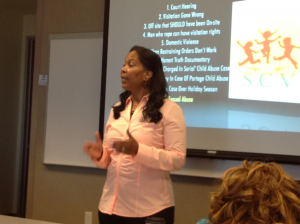When you’re really anxious, your thinking center may strink to the size of a pinto bean, says noted Relationship expert Dr. Harriet Learner. It’s obviously hard to feel good about yourself when anxiety disrupts memory and concentration, leaving you unable to read, write, study, analyze, or take in new information.
Her next declaration is a telling picture into the bold impact anxiety has on a person. “Anxiety scrambles the brain in ways that leave us feeling helpless and self-doubting (ok so we’re familiar with these culprits, but wait), –when you’re anxious you experience catastrophic thinking. Doom and gloom fantasies tend to permeate your day, and reach a fever pitch when you’re lying in bed. Your anxious mind, saddled with far too much free time in the wee hours of the morning, will hook on to some dire, worst-case scenario frequently on the subject of personal finances, health, your child’s future, or the state of the world. And a slew of other issues not mentioned above.
Anxiety can also destroy your capacity to tolerate ambiguity and complexities. We tend not to be able to see both sides of an issue, much less six or seven sides. Objective thinking becomes stunted, frozen, or your brain simply shuts down. Dr. Lerner says the most devastating part to you is your inability to see the many sides of your own self. “You” get lost in the equation, or should I call it, [Your best self] gets lost. You tend to get locked into a narrow view of who you are, and lose sight of your own possibilities.
You’ve probably heard the saying “What you focus on grows.” If the saying is new to you, it’s okay, the important thing for you to know is that IT IS TRUE. Since anxiety shrinks our brain center it makes sense that higher-thinking becomes compromised. When the thoughts we begin thinking are not healthy, by focusing on them allows them to appear real. The lesson to take away is, when a low thinking thoughts (from anxiety) enter your mind, redirect them to higher-thinking thoughts (the better part of who you are thoughts.)
Another noted and well-respected author, Susan Jeffers assesses the impact of anxiety this way. “Anxiety activates the little chatter-box in our heads that spews out catastrophic scenarios and serious doubts about our ability to cope, do new things, and handle whatever life brings. It drives our “lower-self” thinking, which Spurs us to operate from our most reactive self. So if you want to give a dinner party, take a new class, finish your degree after 20 years or get your high school diploma as an adult, your anxiety mind will immediately counter with several reasons why you’re inadequate to the tasks and shouldn’t try it or, for that matter, even think about it for another moment. Sound familiar? Don’t fall prey this.
You matter. What you think matters.
Don’t compare. Appreciate.
Anxiety affects everyone. Focus on it and it grows.
Be your best-self by thinking higher-self thoughts.
Anxiety does NOT have to win. You CAN.
*The above post is a portion of The Dance of Fear by, Dr. Harriet Lerner, Ph.D.. Emphasis added by Tamara L. Daniels The Growth Motivator.
**Anger Management classes held monthly, half-day format at Argosy University. Email: angerundercontrol@yahoo.com or 310.288.6868




Follow Us!